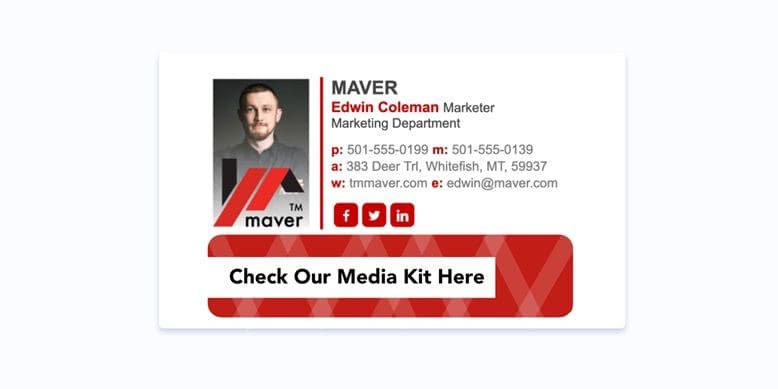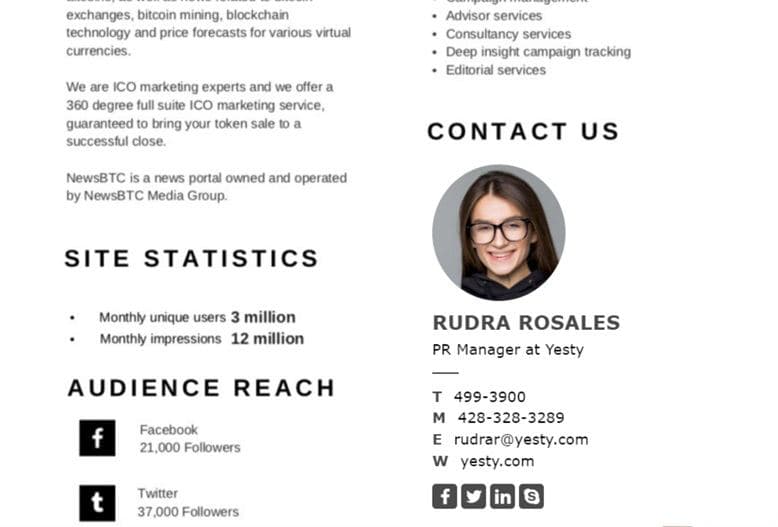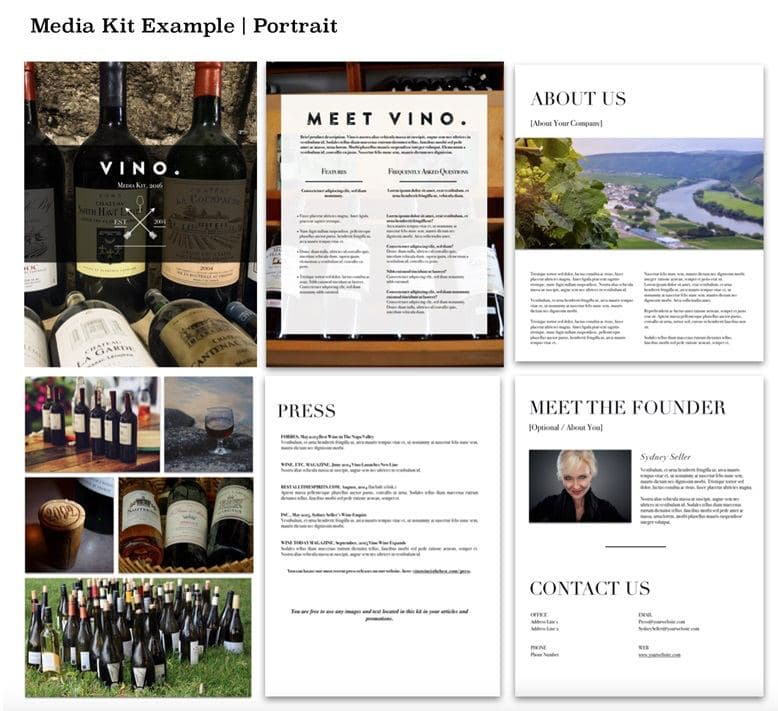A media kit (also called a press kit) is a collection of information about your brand. As a rule, it includes such important details as an about section, contact channels, statistics on your business, mission, vision, explanation why users should care about your products or services, etc. Traditionally, journalists and other content creators use media kits to write an article about your brand without having to meet with you or contact you directly.
On top of that, media kits can help initiate partnerships with influencers and other businesses looking to advertise their products or services.
Media kit formatting varies widely. Some put their information in a simple bulleted list, while others create beautifully-designed graphics. It’s all up to you.
PRO TIP: Use an email signature generator to include your media kit in every email you send.

In this article, we will cover key components to include in your media kit.
- Company overview
In this section, introduce your company and provide a description of its mission. Ideally, you should avoid using any industry jargon and keep your press kit as simple and as clear as possible.
Consider covering the following things:
- A short introduction of your business;
- founding date;
- the size of your business (mention the number of employees);
- a quick demo video of your product or service;
- what makes you shine in your market;
- etc.
No matter how much information you decide to provide, make sure that everything is concise and well-organized.
- PR manager’s contact information
There is little point in creating a press kit if interested people can’t get in touch with you.
Make sure to include various methods to contact you or your PR manager. This can be your phone number, email address, website, or Skype. It’s also common to add your social media contacts, at least the most used ones.
An email signature is a simple and efficient way to provide your contacts professionally. The signature at the example below is created with the help of a free email signature generator.

Check out these email signature examples to know how a good email footer should look like.
Furthermore, your professional email signature is a suitable place to include a call to action (CTA), which will be focused on encouraging the reader to get in touch with you after they finish reading your media kit.
- Block with facts or short business story
Share your brand’s story to draw readers in. This section is key to any media kit. It provides readers with essential details about you and helps them decide if they want to write about your brand or start a cooperation with you.
You can also add statistics that show, for example, a high level of traffic, great user engagement, your company’s growth, etc. Using this data, you will demonstrate why you are an ideal partner in a simple yet convincing way.
You can go even further and use customer testimonials as social proof. Once you provide this info, journalists and writers can incorporate some quotes from your happy customers in their articles.
- Awards and accolades
Don’t hesitate to mention all notable mentions, achievements, and awards, along with a short description of each. Instead of or in addition to showcasing your awards, you can also provide a case study of your client’s success. Sometimes, it works even better, as it confirms that your product or service can meet customers’ needs and make positive changes.
- Top management or owners’ bio
Tell your readers who founded your business or who are the key people playing a crucial role in the company’s development and history. Provide a short bio, describe their background, strengths, and how it all started. Don’t forget to mention their current role in the company.
Important: before you send your press kit to someone, always make sure that all the contact links are updated. You wouldn’t want to miss an opportunity to get published simply because of outdated contact details.
- Block with product or services facts
If you have a product or service, then providing this information is a must. However, keep it all basic and don’t forget that perhaps you are talking to someone who has never heard anything of your product or service. Explain the value and what makes it stand out from your competitors’ products.
- High-quality photos of product or business
Another essential piece of your press kit is great images and assets that tell your company’s story. Use product and team photos. This is an excellent way to add a personal touch to your media kit.
Make sure that all the images you provide are of a high-quality.

Source: Pinterest
- Logos to download
If a person is going to write about you, they will need your logo to refer to your brand. Prepare it in various formats that could possibly be required. Consider different sizes, brand colors, a transparent background, and so on.
- The latest press releases
List your latest press releases chronologically, starting from the most recent. In case you have lots of them, don’t include all of them. You can mention only the essential milestones with the most traffic and valuable information about your brand.
Final thoughts on creating your ideal media kit
Having your own media kit is one of the best opportunities to highlight your brand without having to worry about being too salesy or spammy.
So, how do you create one?
A press kit varies from one brand to another and depends not only on the type of business but also on goals and purposes. Some people create media kits for journalists and other content creators. Others use them to cooperate with other brands. For example, social media influencers (bloggers) usually have media kits that they send to brands to get paid for advertising to their audience.
However, there are several essential things that should be included in every media kit. Making your own one is not that hard once you understand what type of information you should provide. This is what we discussed in this short article.

